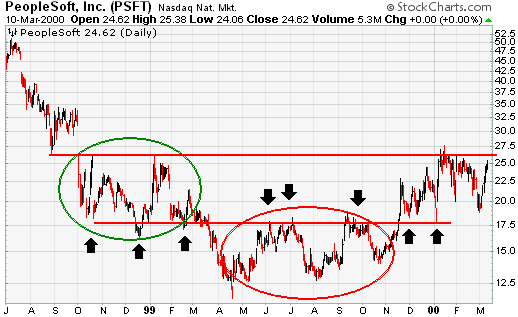How to Identify Support and Resistance Levels on a Stock Chart
Post on: 17 Январь, 2017 No Comment

Support and resistance identify areas of supply and demand. But what exactly is supply and demand? Supply is an area on a chart where sellers are likely going to overwhelm buyers causing the stock to go down.
On a chart, we call this resistance. Demand is an area on a chart where buyers are likely going to overwhelm sellers causing the stock to go up. On a chart, we call this support .
Knowing this, it only makes sense to buy at support and sell at resistance!
Stocks run into resistance (supply) because those traders that bought too late and saw the price go down now want to get out at break even so they sell. Stocks find support (demand) because those traders that missed the move up now have a second chance to get in so they buy.
Ok, you probably already knew all that but here is something that most traders do not know. There are varying degrees of support and resistance.
On the long side: When a stock falls down to a prior low it is more significant than when a stock falls down to a prior high.
On the short side: When a stock rises up to a prior high it is more significant that when a stocks rises up to a prior low.
Here is an example:
The chart above shows how stocks run into resistance and find support. When this stock reached a prior high (resistance), it fell. When it reached a prior low (support), it rose. Now, look at the next chart.
This stock broke through resistance. When it pulled back, it found support at the prior high. This chart shows how resistance, once broken, can become support .
Tip: The more times a stock hits a support or resistance area the weaker it becomes (and the possibility of a breakout increases). Look back up at the previous chart. That stock hit the $26.50 area several times before finally breaking out.
Look again at the those areas that I highlighted in yellow. What are these traders doing buying stocks that are running up into an area of supply (resistance)? Why are they selling their stocks when it is falling down to an area of demand (support)?
They do that because they are novice traders. They always buy after significant buying has already taken place into areas of resistance, and they always sell after significant selling has already taken place into areas of support.
This is the opposite of what you should do!
So.
YOUR JOB AS A SWING TRADER IS TO IDENTIFY THE NOVICE TRADERS BECAUSE THOSE TRADERS ARE THE ONES YOU WILL PROFIT FROM .
How swing traders use support and resistance
So, how does this apply to swing trading? You are looking for stocks to pull back to a prior resistance area. Then, you look for signs that the stock is going to reverse. Here is an example:
The highlighted area in green is where you would buy the stock.
It works just the opposite for shorting stocks. You short stocks after they rally to a prior support area. Like this:
The highlighted area in red is where you would short this stock.
But wait! There are other forms of support and resistance that are not so common. For example, look for stocks that pull back and find support halfway into a prior wide range candle. Like this:
Or, look for stocks to pull back and find support halfway into a gap.
The bottom line is that you want to be buying stocks where buyers will likely come into the stock (support). You want to be selling stocks where sellers will likely come into the stock (resistance). Novice traders do just the opposite of this.
Don’t follow the novice traders!














